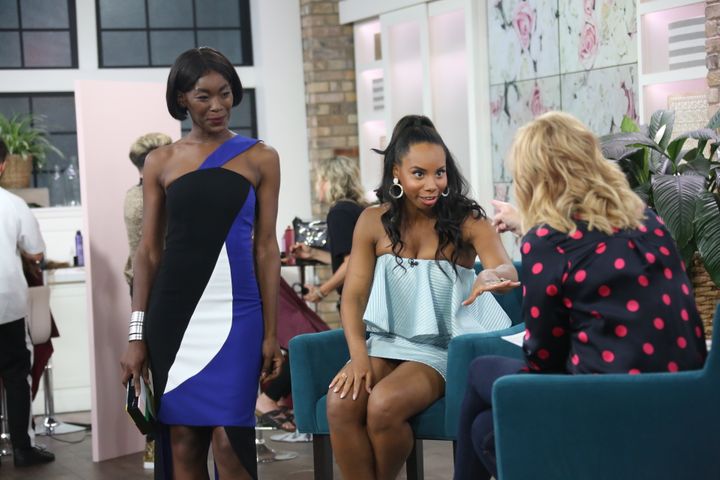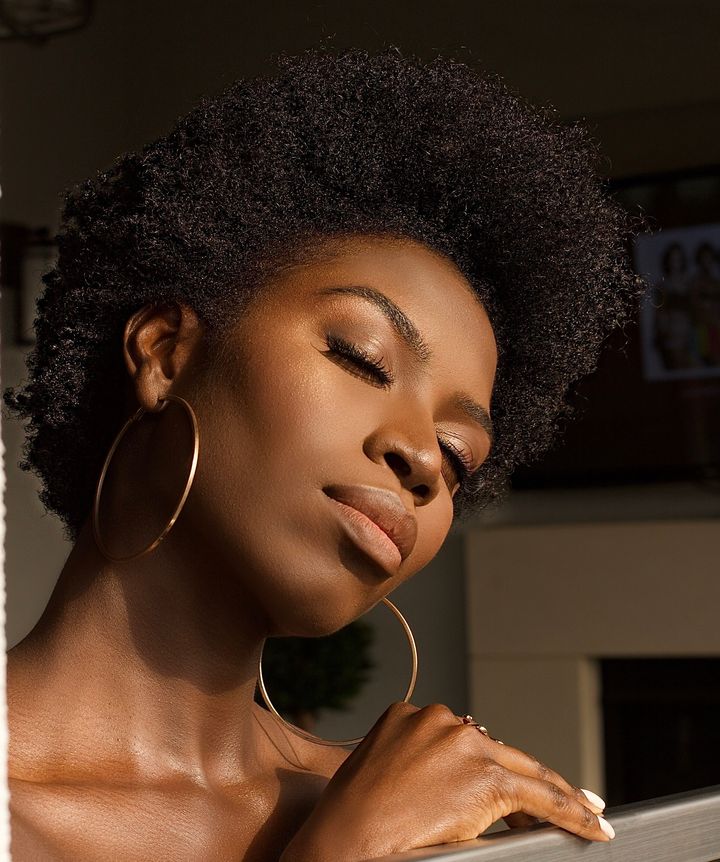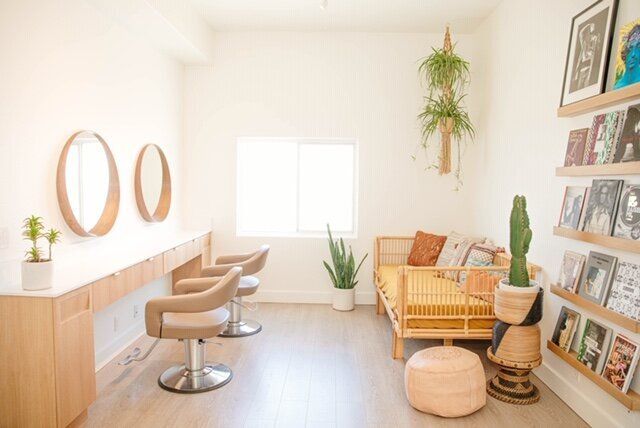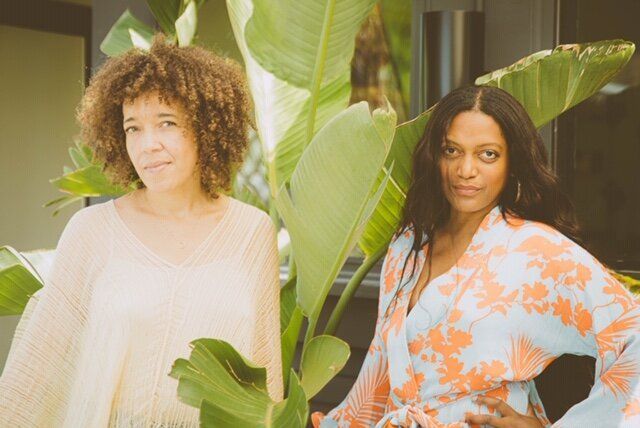[ad_1]
Salon segregation is a dirty secret no one talks about, and unless you’ve experienced it, you might not know it exists.
Although the beauty industry professes inclusiveness, stylists aren’t being trained in all hair types, including textured hair common among Black women. As a result, Black women cannot be expertly serviced in all salons. This is problematic, especially as the salon is a place dedicated to self-care, a place to be pampered and feel beautiful.
“Hair is a microcosm of different issues in America today,” said beauty entrepreneur Myka Harris of Highbrow Hippie, a holistic salon in Los Angeles.
As an extension of identity, hair is deeply tied to ritual and memory. Perhaps your mother pressed the locks from your first haircut in a keepsake book, or you have hazy recollections of a parent combing your hair in a bath. For African-American women especially, hair is culturally laden with significance and collective memory.
Authors Ayana D. Byrd and Lori L. Tharps explain in their seminal book “Hair Story” that before the African diaspora, hair functioned as part of a complex language system, indicating geographic origin, community rank and marital status, among other cultural markers. Slave owners would systematically shave the heads of enslaved Africans, thus severing any connection with Africa. So today, when people refer to natural Black hair as “untamed” or “kinky,” they are being more than insensitive ― they’re enforcing centuries of colonial oppression.
But it’s 2020, and most people know better. The thing is, institutional racism is so entrenched in the fabric of cultural ethos that when it comes to the beauty industry — at the intersection of the personal, political and profitable — remnants of cultural hegemony can be insidious. Rarely do we have an honest discussion about the types of salons we choose as it pertains to race and why it has been accepted for beauty professionals to not be knowledgeable about all types of hair. But how can you dismantle something you can’t put your finger on?

The salon is still one of the last institutions that still stand as being unofficially segregated by race. Michelle O’Connor, the artistic director for Matrix and creative director for the Salon by Instyle, explains salon segregation as “Black and brown women going to salons that cater to this hair type specifically, a Black salon.” She told HuffPost that racial bias in the salon “starts with and ends with the beauty professional,” but adds that cosmetology school is complicit in the bias.
“The standard in Milady [the cornerstone beauty industry textbook], up until recently, has failed to properly address the unique needs of hair that has texture,” O’Connor said. “It’s not an expectation to pass the cosmetology board. If you wanted to learn Black hair, you had to go to a Black cosmetology school such as Dudley’s or you had to learn it from your mother, grandmother and so forth.”
In the current zeitgeist, there’s a movement for people to be educated in cultures other than their own, and for stylists in particular to be adequately educated in all types of hair. However, this isn’t always the case.
“As a Black woman, and someone who goes on TV regularly, I’m hypersensitive about who touches my hair,” said Cindy Conroy, a TV personality and stylist. “My hair needs an expert and gentle touch to keep it healthy,” she explained. “I feared [an inexperienced stylist] might not know how to gently coax my locks into bouncy curls.”
This fear is rooted in what was a traumatic salon encounter Conroy experienced as a teenager. “I went to a regular chain to get my hair done. All the stylists in the salon were white. The woman who was servicing me said, ‘Your hair would be easier for me to do if it was relaxed.’ My hair was relaxed. This comment made me feel less than. It scarred me a bit.” Deepening the insult, the stylist had no idea she was being offensive. “That stung,” Conroy said. “Look, this was a long time ago. It’s 2020 now and things have changed. Recently, I was traveling in Paris and wanted to get my hair done.” A white stylist pleasantly surprised Conroy. “The whole process was seamless and positive. She knew how to wash, detangle, and flatiron. I even agreed to a trim. Typically I would never do that – but it just felt right. I felt at ease and pampered. So I let her do her thing.”
The dynamic of white women servicing Black women is, according to O’Connor, “something that’s rare.” When you add in the intimate element of touching someone’s hair, and “understanding another’s culture, their pain, and appreciating that their beauty is expansive,” she said, matters get complicated. “We wear Bantu knots, cornrows, locs, big Afro curls and twists. We still live in a culture where there is discomfort surrounding these styles. These styles represent a push back.”
Demi Grace, a model, singer, songwriter, and beauty influencer who appeared in a 2017 Pantene ad, making history as the first woman with locs to score a major beauty campaign, told HuffPost that it’s not uncommon for stylists who aren’t Black to come to set without the skills needed to service Black models.

“Stylists on set are prepared,” Grace told HuffPost. “Before coming to work they’ve already seen photos of the models. So when you go on set and you don’t see a cadre of products very popular within the Black hair community, products that every Black girl has at home like, edge control, heat protectant, sheen spray, or any kind of Black Girl Magic hair product, it becomes obvious that the stylist doesn’t do Black hair.”
White stylists are loath to admit they don’t know how to service textured hair. (Although we spoke informally to a handful of white stylists, we couldn’t get any to go on record for this story.) “No one flat-out says it,” Grace explained. “‘It looks fine as-is’ is a popular cop-out.”
What happens on set has a direct relation to what happens inside the salon, as the proliferation of images literally puts bodies in chairs. “There’s not enough knowledge about how healthy Black hair is supposed to look,” Grace said. However, following such a positive experience working with Pantene, Grace is optimistic about the direction beauty brands and media are headed. “Pantene had a huge hand in changing the game [with my commercial]. Now you’ll see braids and Afros.” Grace said more beauty brands are hip to marketing products specifically to women who wear these styles.
Women like Harris ― who partnered with her longtime friend and celebrity colorist Kadi Lee to open a holistic wellness salon in Los Angeles ― are invested in making sure the salon stays sacred. And that means being inclusive of everyone.

Highbrow Hippie, Harris and Lee’s atelier space that offers yoga and meditation in addition to a full range of clean beauty services, is a salon in the historical sense of the word, built to nourish community as a space where people go to practice self-care and connect with others.
As a colorist at Highbrow Hippie, Lee works with many women outside her race. And to move the dial in a more positive direction, Harris and Lee oversee the training of Highbrow Hippie stylists, making sure they’re all trained to do Black hair. “When you get out in the world, the people who succeed the most take on all types of hair,” Harris said. “Our stylists practice on us,” Lee added.

Likewise, at Matrix, O’Connor trains thousands of hairdressers on crossing ethnicities as it pertains to hair. “I teach them that hair is similar to fabric,” she said. “Saying ‘I don’t do Black hair’ becomes the equivalent to a designer saying ‘I refuse to work with silk or wool.’ It sounds asinine.”
Sho, a blogger and stylist we spoke with, urges Black women to speak up if they’re not satisfied with any personal care service. “As a hairstylist, you should be educated on how to deal with every hair type.” In the event that a stylist doesn’t have the necessary skill set, “You need to politely find a solution,” she said. “As a [wardrobe] stylist, if I give a client a look that doesn’t work, my client is going to speak up. It has nothing to do with race. People have different preferences and looks. If this is your passion and you’ve studied your craft, race shouldn’t play a factor. It’s hair.”
Lee echoed this sentiment. “Why are we focusing on physical attributes? There’s so many deeper things to focus on.”
Read more about the complicated relationships we have with our hair at My Hair, My Story.
[ad_2]
Source link

